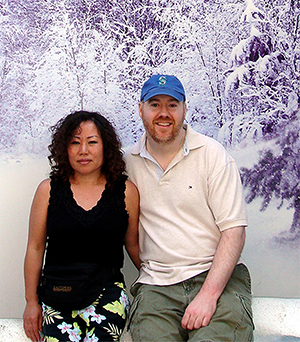
 Photography Tips for Everyday Moments
Photography Tips for Everyday Moments
The most extraordinary beauty is often found in ordinary moments. In this series, William Stanek helps you see the world through a new lens, transforming everyday experiences into stunning photographic memories.

Transform your life with practical wisdom. Discover William Stanek's 'Living Well' series—your guide to a balanced and fulfilling life.
Discover William Stanek's Exclusive Art Collection
Explore and purchase the stunning art featured on this site. Own a piece of William Stanek's unique and captivating artwork today!
(May 9, 2025) The Joy of Imperfection: Embracing the Unpredictable in Photography
Life is unpredictable, full of surprises, imperfections, and moments that don’t always go according to plan. But these unpredictable elements are often what make life—and photography—so beautiful and meaningful. Embracing imperfections in your photography allows you to capture the raw, unfiltered essence of a moment, turning what might seem like flaws into powerful, authentic images. Here, we’ll explore the art of embracing imperfection, learning to let go of perfectionism and find joy in the unexpected.
Introduction: The Beauty of the Unexpected
Some of my most memorable photographs were born from moments that didn’t go as planned. Whether it was a sudden change in weather, an unexpected movement from a subject, or a technical hiccup, these moments forced me to adapt and capture what was happening rather than what I had envisioned. The result? Photos that were more real, more emotional, and often more impactful than the ones I had originally intended.
Photography, like life, is full of imperfections. But it’s these imperfections—the blurred edges, the stray light flare, the off-center composition—that often add character and depth to an image. By embracing the unpredictable, you open yourself up to a world of creative possibilities, capturing images that are not only unique but also deeply resonant.
Learning from Mistakes: Turning Flaws into Features
Every photographer has experienced those moments when a shot didn’t turn out as expected—a blurry image, an overexposed sky, or a subject moving out of frame. While it’s easy to dismiss these as mistakes, they can also be opportunities to see your work in a new light.
Blurred Motion: One of the most common “mistakes” in photography is motion blur, which occurs when the camera or subject moves during a long exposure. But motion blur can also convey a sense of movement, energy, or even chaos, adding a dynamic quality to your photos. Instead of discarding blurry images, consider how the blur adds to the story you’re telling.
Overexposure and Underexposure: Overexposure (too much light) or underexposure (too little light) might seem like reasons to discard a photo, but these extremes can create powerful effects. An overexposed image can evoke a dreamlike, ethereal quality, while an underexposed image can add mystery or tension. Embrace these “flaws” and think about how they contribute to the mood of your photo.
Unconventional Compositions: Sometimes, a subject doesn’t land exactly where you intended in the frame. Instead of sticking to traditional rules of composition, explore the off-center or unconventional placements. These compositions can create a more dynamic, spontaneous feel, and can draw attention to aspects of the image that might otherwise be overlooked.
Pro Tip: When reviewing your photos, don’t just focus on what went wrong. Instead, ask yourself what makes each image unique, and consider how the so-called flaws might actually enhance the photo.
Exercise: Go through a collection of your “mistakes” or photos you initially dismissed. Choose one that stands out and analyze why it didn’t work as planned. Then, look for the hidden potential in the image. How can you reframe the “flaws” as features? Edit the photo with this new perspective in mind and see how it transforms.
Unscripted Moments: Capturing the Magic of the Unexpected
Some of the most powerful images are those that capture unscripted moments—those fleeting, unplanned instances that reveal the true essence of a scene or subject. These moments are often where the real magic happens, offering a glimpse into something raw, honest, and deeply human.
Candid Photography: Candid shots, where the subject is unaware of the camera, can capture genuine expressions and interactions that staged photos often miss. Whether it’s a child lost in play, a couple sharing a quiet moment, or a stranger in deep thought, these candid images convey emotion and authenticity.
Embracing Interruptions: Life doesn’t pause for a perfect photo. Embrace the interruptions—a gust of wind, a sudden change in light, or an unexpected guest in your frame. These elements can add spontaneity and a sense of realness to your images, reminding viewers that life is beautifully unpredictable.
The Beauty of the Unplanned: Often, it’s the unplanned moments that make a photo stand out. A bird suddenly flying into the frame, a child’s unexpected laughter, or the way light hits a surface just right—these are the moments that can’t be staged or recreated, making them all the more precious.
Pro Tip: To capture unscripted moments, keep your camera ready and stay present in the scene. Instead of waiting for the “perfect” moment, be open to whatever happens. Sometimes, the most imperfect moments are the ones that tell the most compelling stories.
Exercise: Spend a day photographing candidly, focusing on unscripted moments. Don’t worry about getting the perfect shot—just capture what unfolds naturally. Review your images and reflect on how these unplanned moments add depth and authenticity to your work.
Finding Perfection in Imperfection: Why Flawed Photos Often Hold the Most Beauty
The concept of wabi-sabi, a Japanese aesthetic that finds beauty in imperfection, can be a powerful philosophy to embrace in photography. Wabi-sabi encourages us to appreciate the imperfect, the incomplete, and the impermanent—qualities that often make an image more relatable and emotionally resonant.
The Aesthetic of Wabi-Sabi: In photography, wabi-sabi might manifest as a weathered building, a wrinkled hand, or a foggy landscape. These images, which might not adhere to conventional standards of beauty, offer a deeper, more textured understanding of the world. They remind us that beauty is not always about perfection; sometimes, it’s about authenticity and truth.
Imperfect Portraits: When photographing people, perfection is often equated with flawless skin, perfect lighting, and posed expressions. But it’s the imperfections—the wrinkles, the scars, the stray hairs—that tell a person’s story. These details are what make a portrait unique and give it emotional weight.
Unfinished Stories: Not every photo needs to be a complete narrative. Sometimes, the most powerful images are those that leave something to the imagination, that suggest rather than show, that invite the viewer to fill in the gaps. These “unfinished” photos allow for a more personal connection, as viewers bring their own interpretations and emotions to the image.
Pro Tip: Embrace the wabi-sabi philosophy in your photography by seeking out the imperfect, the overlooked, and the unconventional. Look for subjects that tell a story through their flaws and imperfections, and capture them in a way that celebrates their unique beauty.
Exercise: Create a series of photos inspired by the concept of wabi-sabi. Focus on finding beauty in the imperfect, whether it’s a crumbling building, a wilted flower, or a well-worn object. Reflect on how these imperfections add depth and meaning to your images.
Allowing the Unexpected to Shape Your Photography: Trusting Your Instincts
One of the greatest challenges—and rewards—of photography is learning to trust your instincts. When you let go of the need for control and perfection, you open yourself up to the unexpected, allowing your photography to be shaped by intuition and spontaneity.
Following Your Gut: Sometimes, the best photos are the ones you take on a whim, without overthinking the composition, settings, or subject. Trusting your gut allows you to capture what feels right in the moment, leading to images that are more authentic and emotionally resonant.
Serendipity in Photography: Serendipity plays a big role in photography—the chance encounters, the unexpected discoveries, the perfect light that appears out of nowhere. By staying open to these moments, you allow your photography to be guided by the world around you rather than by preconceived notions of what a photo “should” be.
Letting Go of Control: Photography is often about controlling the environment—choosing the right light, positioning the subject, framing the shot. But there’s also value in letting go of that control and allowing the environment to dictate the outcome. Embrace the elements you can’t control, whether it’s the weather, the behavior of your subject, or the limitations of your equipment. These factors can lead to creative breakthroughs and unexpected results.
Pro Tip: Practice letting go of control by setting aside time for spontaneous photography. Go out with your camera and no specific plan or goal. Follow your instincts, shoot what catches your eye, and see where the day takes you.
Exercise: Spend an afternoon photographing without a plan. Don’t worry about settings or composition—just follow your instincts and capture what feels right in the moment. Review your photos afterward and reflect on how letting go of control influenced your work.
Conclusion: Celebrating Imperfection in Photography
Imperfection is not something to be avoided in photography—it’s something to be celebrated. By embracing the unpredictable, the flawed, and the unscripted, you can create images that are more authentic, more emotional, and ultimately more powerful. These are the photos that resonate with people, that tell real stories, and that remind us of the beauty in life’s imperfections.
As you continue your journey as a photographer, remember that perfection is not the goal. The goal is to capture the truth of a moment, in all its messy, unpredictable, beautiful glory. So let go of the need for control, embrace the unexpected, and find joy in the imperfections that make your photos—and life—unique.
Share your perfectly imperfect photos with us on Instagram using #PerfectlyImperfect. We’d love to see how you’re embracing the unpredictable in your photography.

Join William at the crossroads of technology, business, and leadership, where true influence isn't about titles - it's about inspiring action, driving change, and guiding others with integrity. Discover how authentic leadership can transform not just careers, but entire industries.
Bring Inspiration Home
Enhance your space with William Stanek's evocative art. Each piece is crafted to inspire and uplift your everyday life.

Support The Lights of Paris by Robert Stanek, William Stanek's pen name! Through vivid historical detail and deeply moving character stories, Robert takes readers on an unforgettable journey through one of history’s most transformative times.
















